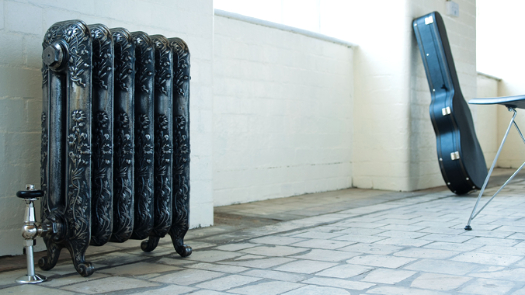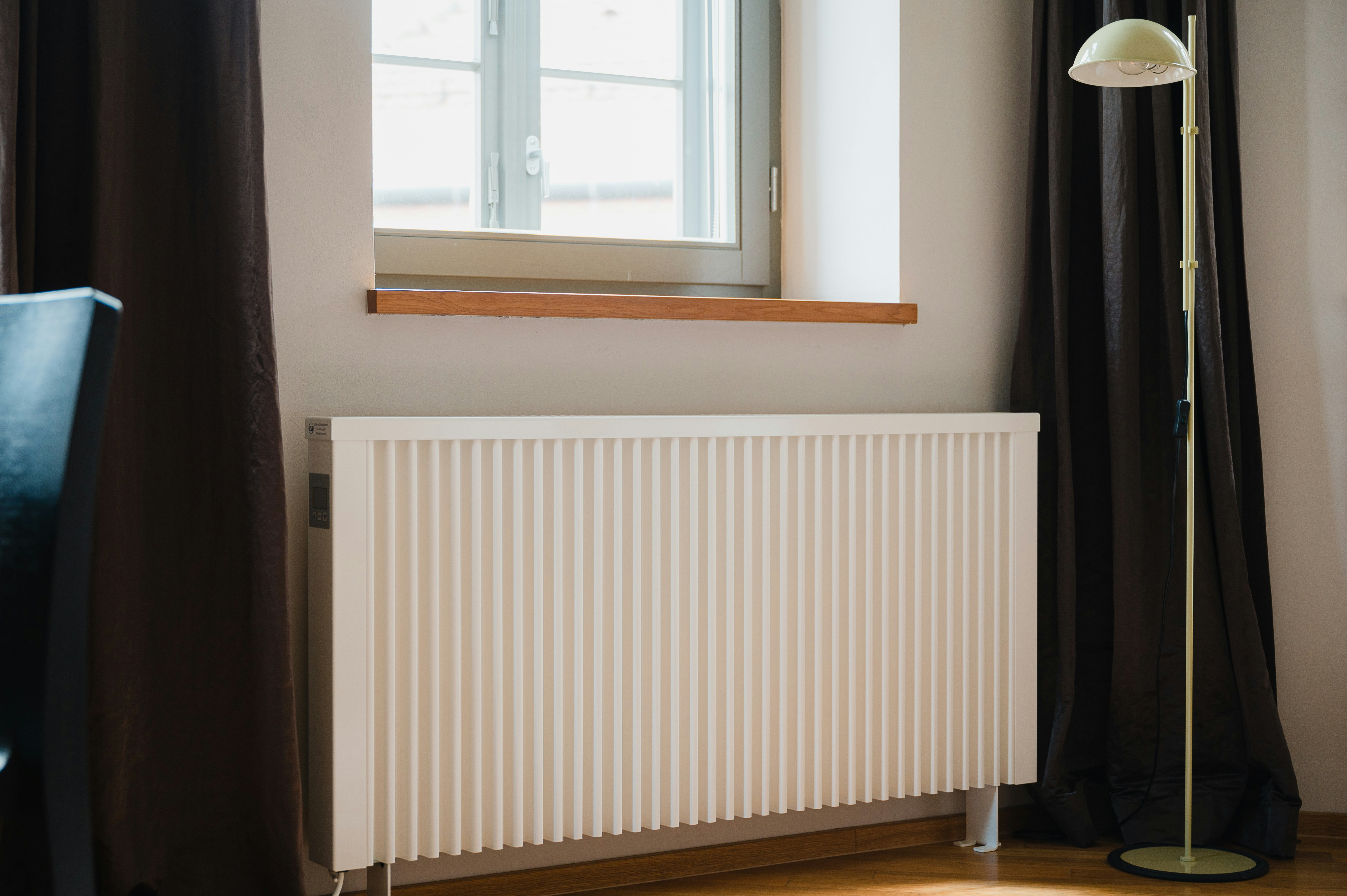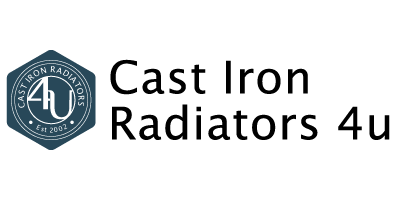Cast Iron vs Steel Radiators
Posted by Cast Iron Radiators 4u on 28th Mar 2025
Radiators play a vital role in home heating, but more than just providing efficient warmth, they can also enhance the overall aesthetic of our living space. With various options available, selecting the right material for your radiator is essential for optimal efficiency, durability, and design compatibility with your home. Today, the primary contenders in radiator materials are cast iron and steel, each offering distinct advantages and drawbacks.
In this comprehensive guide, we’ll explore all the pros and cons of cast iron radiators vs steel radiators, helping you determine which option best suits your heating needs, interior style, and budget.
Cast Iron Radiators

Cast iron radiators have been a staple in homes and buildings since the Victorian era. Known for their durability and heat-retention properties, these radiators have remained popular, particularly in period properties and traditional interiors, and for good reason. Their ability to provide consistent and long-lasting warmth makes them a preferred choice for homes with classic designs. They are ideal for older properties and heritage buildings, suitable for rooms requiring long-lasting, steady warmth, and perfect for home decor enthusiasts seeking a vintage or classic aesthetic.
Characteristics of Cast Iron Radiators
✅ Heavy and Durable: Cast iron radiators are significantly heavier than their steel counterparts, which makes them incredibly sturdy and long-lasting.
✅ Excellent Heat Retention: Once heated, cast iron radiators continue to emit warmth for an extended period, even after the heating system has been turned off.
✅ Timeless Aesthetic: Available in ornate and vintage designs and in a range of colours, cast iron radiators perfectly complement period homes and traditional interiors.
❌ Slow to Heat Up: While they retain heat well, cast iron radiators take longer to reach their optimal temperature compared to steel radiators.
Steel Radiators

In recent years, steel radiators have gained popularity due to their contemporary design, affordability, and efficiency. They are widely used in modern homes and commercial properties, offering a range of styles to suit different interiors. Perfect for modern and minimalist home designs, steel radiators are suitable for spaces where quick heating is a priority and an excellent choice for homeowners seeking a cost-effective heating solution.
Characteristics of Steel Radiators
✅ Lightweight and Versatile: Steel radiators are significantly lighter than cast iron models, making them easier to install and more adaptable to various home styles.
✅ Quick to Heat Up: Steel radiators warm up rapidly, providing instant heat, which is ideal for short heating cycles.
✅ Variety of Styles and Finishes: Modern steel radiators come in sleek, minimalist designs, making them a great choice for contemporary interiors.
❌ Cool Down Quickly: Unlike cast iron, steel radiators lose heat quickly once the central heating system is turned off.
Key Differences Between Cast Iron and Steel Radiators
Choosing between cast iron and steel radiators requires careful consideration of their differences in performance, durability, and overall practicality. While both materials serve the same primary function of heating a space, their characteristics can significantly impact efficiency, maintenance, and aesthetics. Below, we’ll explore all the key differences to help you make an informed decision.
Heat Retention & Efficiency
Cast iron radiators take longer to heat up but retain warmth for an extended period. This makes them an excellent choice for maintaining a consistent temperature. The slow release of heat means they continue to warm a room even after the central heating is switched off, contributing to energy efficiency over time.
In contrast, steel radiators heat up very quickly, making them ideal for spaces where rapid warmth is needed. However, they also cool down faster once the heating system is turned off, which may result in more energy consumption to maintain a steady temperature.
Durability & Lifespan
Cast iron radiators are renowned for their durability - with proper care, they can last for decades, often outlasting the lifespan of the building they are installed in! Their robust construction makes them resistant to general wear and tear, requiring minimal maintenance to keep them in good condition.
Steel radiators, on the other hand, are more prone to corrosion, particularly in older central heating systems where oxygen or debris in the water can lead to rust. While proper maintenance and regular system flushing can help extend their lifespan, steel radiators generally do not last as long as their cast iron counterparts.
Aesthetics & Design Options
Cast iron radiators are often chosen for their traditional, ornate appearance, making them the preferred choice for period homes and classic interiors. Their intricate detailing and vintage designs add a touch of elegance to any space. Conversely, steel radiators are available in a vast range of modern styles, from minimalist flat panels to designer radiators with unique finishes. Their versatility allows them to complement contemporary spaces and modern architectural aesthetics.
Weight & Installation Considerations
Due to their solid construction, cast iron radiators are significantly heavier than steel radiators. This weight means they require sturdy wall supports or floor-mounting to ensure stability, making installation more complex and often requiring professional assistance.
Steel radiators, being much lighter, are easier to install and more suitable for DIY home improvement projects. Their lightweight nature also makes them ideal for walls with weight restrictions or homes where ease of installation is a priority.
Cost & Maintenance
Cast iron radiators typically come with a higher initial cost due to their premium materials and craftsmanship. However, they require little maintenance and serve as a sensible long-term investment, potentially saving money in the long run through their durability and energy-efficient heat retention.
Steel radiators are generally more affordable upfront, making them an attractive choice for budget-conscious homeowners. However, they may require more frequent maintenance to prevent corrosion and are much more likely to need replacing sooner than cast iron models.
Summary of Key Differences
|
Feature |
Cast Iron Radiators |
Steel Radiators |
|
Heat Retention |
Slow to heat up but retains warmth for long periods. |
Heats up quickly but cools down fast. |
|
Durability |
Highly durable, can last decades with minimal maintenance. |
More prone to corrosion, requires regular maintenance. |
|
Aesthetic Appeal |
Traditional, ornate, vintage look. |
Modern, sleek, and available in various styles. |
|
Installation |
Heavy, requires sturdy support and professional installation. |
Lightweight, easier to install and DIY-friendly. |
|
Cost & Maintenance |
Higher upfront cost, but low maintenance and long lifespan. |
Lower initial cost, but may require more maintenance and replacement. |
Choosing the Right Radiator for Your Home
Selecting the perfect radiator for your home involves more than just choosing between cast iron and steel. Your decision should be based on a combination of factors, including heating efficiency, room size, aesthetic preference, and budget. The right radiator can enhance your home's warmth and comfort while complementing your interior design.
Cast iron radiators are best suited for those seeking a long-lasting, efficient, and traditionally styled heating solution. Steel radiators, on the other hand, offer a lightweight, modern, and cost-effective alternative. Below are some key factors to consider when making your decision:
When selecting a radiator, consider the following factors:
-
Heating Needs: If you prefer a radiator that retains heat for long periods, cast iron is the better choice. For rapid heating, steel is more suitable.
-
Space Constraints: Cast iron radiators require sturdy support due to their weight, whereas steel radiators are more adaptable to different spaces.
-
Aesthetic Preference: For a classic, vintage look, cast iron radiators are ideal. If you prefer a modern, sleek design, steel radiators offer more variety.
-
Budget Considerations: While cast iron radiators require a higher initial investment, their durability and efficiency can lead to long-term savings on energy bills. Steel radiators are more affordable initially but may need replacing sooner.
Cast Iron Radiators from Cast Iron Radiators 4u

At Cast Iron Radiators 4u, we specialise in high-quality cast iron radiators that combine timeless elegance with superior heating performance. Our collection includes a wide range of styles to suit traditional and modern homes alike.
Why Choose Cast Iron Radiators from Us?
-
Extensive Range: We offer a variety of modern cast iron radiators, from classic Victorian designs to contemporary models.
-
Durability & Efficiency: Our cast iron radiators provide long-lasting heat, helping to reduce energy bills over time.
-
Expert Advice: Our knowledgeable team can offer expert advice to help you find the perfect radiator to match your home’s heating requirements and aesthetic preferences.
-
Competitive Pricing: We offer high-quality cast iron radiators at competitive prices, ensuring excellent value for money.
Whether you are restoring a period property or looking to add a touch of classic charm to a modern home, Cast Iron Radiators 4u has the perfect heating solution for you. Contact us today to order for fast UK delivery!
FAQs
Are cast iron radiators better than steel radiators?
The answer depends on your needs. Cast iron radiators offer superior heat retention and durability, making them ideal for homes that require consistent, long-lasting warmth. Steel radiators, on the other hand, heat up quickly and are more suited for modern homes where rapid heating cycles are needed.
Do cast iron radiators take longer to heat up?
Yes, cast iron radiators take longer to reach their optimal temperature compared to steel radiators. However, they retain heat for much longer, even after the heating system is switched off, making them more energy-efficient in the long run.
Which radiator type is more cost-effective?
Steel radiators tend to have a lower upfront cost, making them a more budget-friendly option initially. However, cast iron radiators last significantly longer and require less maintenance, making them a better long-term investment in terms of cost and energy efficiency.
Are cast iron radiators harder to install?
Yes, cast iron radiators are much heavier than steel radiators, requiring sturdy wall brackets or floor-mounting. Installation may require professional assistance due to their weight and size, whereas steel radiators are lightweight and easier to install, making them a popular choice for DIY enthusiasts.
Do steel radiators rust more easily than cast iron radiators?
Steel radiators are more prone to corrosion, especially if not properly maintained. Regular system flushing and using high-quality inhibitors can help extend their lifespan. Cast iron radiators are less susceptible to rusting, particularly when properly cared for.
Which radiator type is better for period properties?
Cast iron radiators are the preferred choice for period properties due to their classic, ornate designs that complement traditional interiors. Steel radiators are better suited for modern and minimalist home aesthetics.



